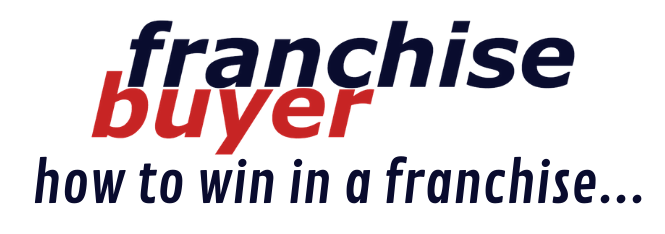
Growing Business with Retail Intelligence Technology
With technology transforming our day-to-day lives, the options available to any bricks and mortar retailer are numerous. The best place to start is to find out what is actually possible and available.
Today’s modern retail landscape has changed. Foot traffic has certainly declined in the traditional retail destinations over the years (shopping malls), but approximately 90% of retail still remains in-store. Good retailers have adapted to use technology to keep their buyers engaged and happy.
Aside from the efficiency benefits that technology can provide to a business, it also offers a new way for consumers to interact with the retailer, the product, make decisions, purchase more, and share their newly purchased treasures.
Retail intelligence gives an insight into what consumers desire, what they need, how likely they are to purchase and what drives those purchasing decisions. Here we discuss some of the current strategies that good retailers are adopting in technology to help their business remain not only competitive but future proofed.
Implement a Modern POS system
Modern touchscreen point of sale (POS software) can give you access to live data throughout the day and aggregate sales data across multiple sites. Timely access to data and quality reporting will help with strategic decision-making, promotion planning and efective operations.
Some key things to consider when choosing a POS provider should be;
• Fit for purpose – There are a lot of different POS systems on the market. You need to evaluate and match core business needs against the operating functionality of the system.
• Customer Loyalty Integration - What features and functionality is built in or available from integration partners to increase customer loyalty?
• Payment Support – What payment providers are supported, and are electronic payment types such as EFTPOS directly integrated within the software to avoid clerk mistakes?
• Reporting – How accessible is your data? Is it able to show multi-site live data or is it only offering a daily read out?
• Omnichannel support – Can your inventory be sold in-store, online, mobile and social all at the same time?
Encourage Interaction
When it comes to the buyer experience, positivity and peer approval can be important factors in influencing a buying decision. For example, encouraging and enabling customers in a clothing store to try on outfits, share them via social media and seek instant approval, can improve both sales and drive brand awareness. Digital signs, kiosks, and touchscreens attract shopper attention, provide product advice and product suggestions, and encourage engagement with current retail promotions. In-store hubs can enable customers to view items in-store while at the same time also shopping for alternative options within an online catalogue with items/inventory not on site.
In the next few years, expect to see the introduction of advanced in-store technology such as augmented reality systems where digitally enhanced content is layered over real world items. Virtual reality systems where customers can attend live streamed product launches and events and interactive product hangers that, when lifted, trigger pre programmed content, lighting, or music.

In-store tracking technology is also becoming more accessible and cost efective. With widespread smart phone adoption, customers are becoming more open to real-time engagement with the retail environment to enhance and support buying decisions. Near Field Communication and RFID technology can be deployed on product tags to allow buyers to access product information, loyalty programs, share content, and scan basket items. Location Based Services uses the internal GPS of a phone to match buyer location, special ofers, and ofer promotional deals to loyal consumers.
Enabling Smartphone use in-store
Customers are increasing using smart phone technology to research and review products whilst in-store. Ofering free customer Wi-Fi is a low cost and efective way to enable this customer interaction and can ofer additional benefts to the retailer. Facebook check-in provides a fast and simple way for customers to access free Wi-Fi services in-store. Automatic redirection of customers to your Facebook business page allows customers to browse store information, engage with current promotions and to ‘Like’ your brand. Te
customers’ check-in status will also be posted to the users Facebook News Feed, further increasing the presence of your business amongst the customers friends. By actively contributing to leading internet product review sites and comparison websites, the retailer can also ensure that the customer fnds positive reinforcement about the product and brand when searching online.
Retail Analytics
By harnessing the power of intelligent video analytics provided by modern IP Video Surveillance systems, retail operators can gain new insights into specifc consumer behaviour to help spot trends and make more informed business decisions.
Some of the readily available data from these systems include:
• Store Traffic Management (people counting) - Measure the number of people who visit your store, at a whole site or within a specific zone of observation. Improve customer service by

smartly planning staff hours around peak times. Plan in-store promotions more accurately and optimise your promotional strategies.
• Queue Management - Measure and manage the load on points of client service in your store. Improve business efficiency and
increase customer satisfaction.
• Heat Mapping - Understand your customer traffic patterns. Plan promotions and merchandise placement based on information about the most attractive areas of your store. Determine the effectiveness of your product placement and scale out successful experiments.
• Facial Recognition – Putting a name to a face has taken on a new meaning. Facial recognition is no longer a futuristic technology and will be a real game changer for retail implementations. Imagine welcoming a patron in a different city of the same brand of the outlet by their first name from an intelligent multi-site detection system.
Payment Providers
Taking payments in retail has changed dramatically in recent years. Universal adoption of credit and EFTPOS cards, along with the ever-increasing use of Apple and Android Pay means that consumers expect to be able to pay via their preferred method and to do so without added fees.
Treat merchant fees as a cost of doing business and build it into your product cost. Payment surcharges are increasingly unpopular amongst consumers and can negatively diferentiate your business from the competition. Opt instead for convenience and simplicity for the consumer. Quality retail intelligence has become an accessible commodity for business owners of any size. Technology such as advanced point of sale system, video analytics platforms and managed customer Wi-Fi can provide exceptional data to assist with day to day decision making and long term strategic planning. The effective use of technology in-store can continue to provide an engaging point of difference to your competition. Think about the best interactions you’ve had with a company and their technology. Consider their impact on you and how that affected your buying choices, and how you can adapt that technology to work for you.





